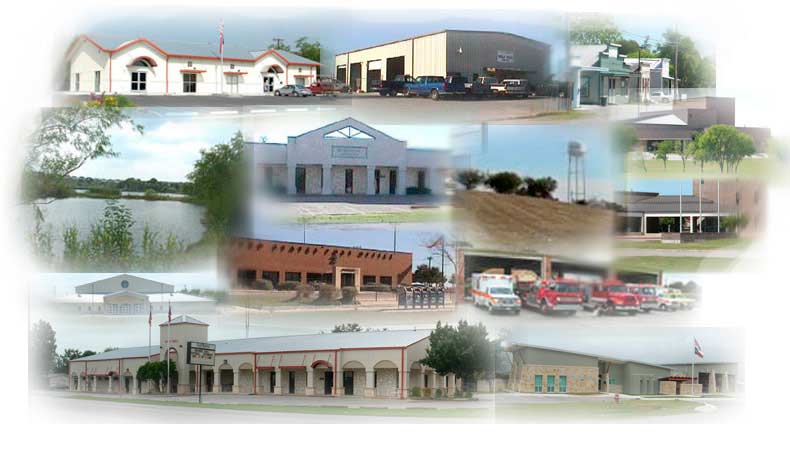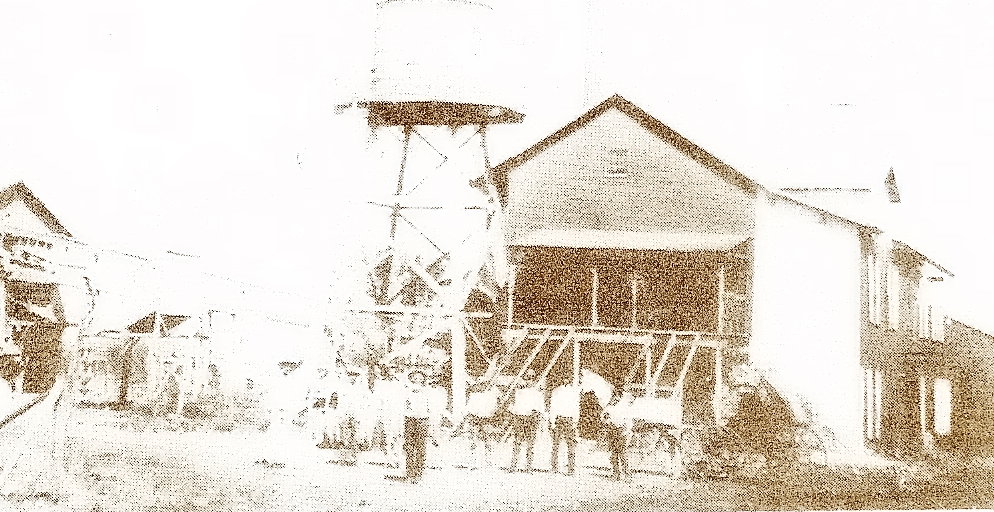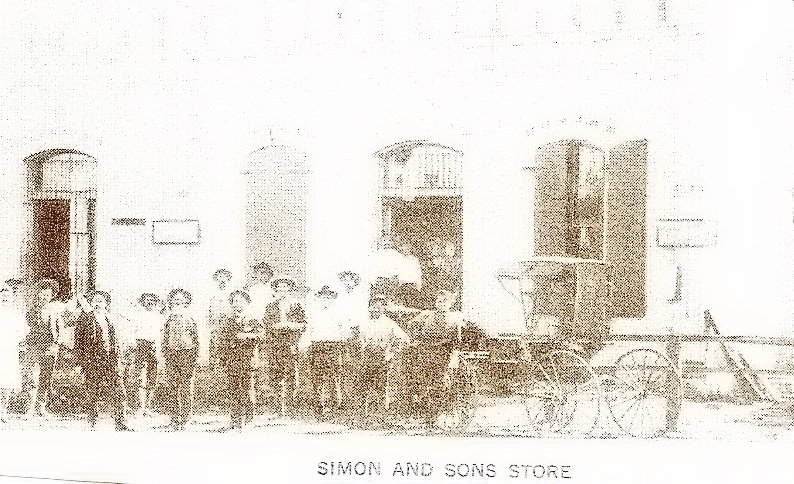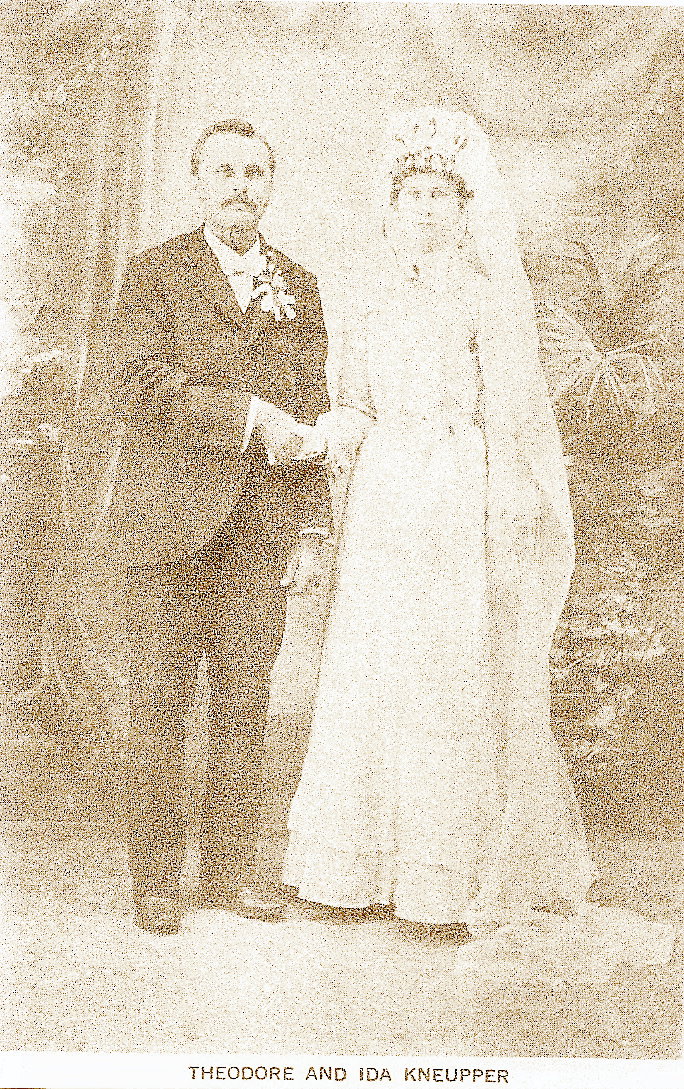
Anthony Lopez |
Robert Hines |

Converse is an attractive small town lush with nature. You can still see farmlands that have been passed down for generations. The bright and vibrant landscapes give a feel of tranquility only found in storybooks or novels. Converse is now a diverse town in the backdrop of San Antonio, but it wasn't always like that. It used to be a small community. The people of Converse were unwilling to take in big business, in order to keep the "small town feel". Howard Marbach put it best when he said, "we've been horrible with antiquity". Interpreting that, you could say we don't remember our own history. History is usually lost with those that have passed on. This is my attempt at preserving that history that all too few try to protect.
The reasons for settlement into Converse are unknown we can only assume. Most reasons people migrated into the Converse area was because of the economic problems in Europe. Europe was in as struggle with economic and social depression. The people left their country in search of opportunity, and Converse was that opportunity. Family and friends would send letters back home, speaking of the many opportunities in America. They called America the land "milk and honey" (Converse), but they were unaware of the hard ships to come. Most of the Germans settled where the soil was "black", because this soil was perfect for farming. Most of the land was under Spanish grants. German immigrants bought land, but had no way of working the land. They had no equipment to plow their fields, and the weather also proved to be a burden. They lived off the land for as long as they could. There was also abundance of wildlife. The people could hunt for food when necessary. The land was still "untouched". There was much work to be done, in order to get the land in good conditions for harvesting. Mexicans did much of the work. They were hired to do the backbreaking work. The settlers used the wood of the cut trees for their homes. A cord of wood would go for one to three dollars. The wood was bought for any things. They used it for there homes, or to feed the fire. After the land was cleared it was ready to be worked. Many homes and barns were built using what they had. Neighbors would help each other build homes. The Germans were (skilled) hard workers and took pride in their work. They wore the sweat on their brow as a badge of honor, unafraid of hard work. The Germans were very capable of keeping themselves maintained. There supply of food was unlimited. "Every farm had an orchard and a vineyard". (Converse) the old ways of farming didn't work particularly well in these new conditions. Most of the farmers learned through trial and error. They helped each other out, and gave each other tips they learned through their errors. Every farm had its own cattle, and the land was farmed by strip cropping. Cotton was the most important staple crop, corn being second.

They also grew grain like Milo for cattle. The Germans settlers didn't use slaves to work for them because they already used Mexican workers. Many of the Mexican families settled in the community also. Some of the families were even given "rent free" homes. They were even given horses and mules to work share cropland. There were no racial barriers between the people. "It was not unusual for Mexican families to break bread with the white people". (Howard Marbach) There weren't any language barriers either, because children spoke German and Spanish. They learned from each other. They didn't even know what racism was until they started school. Agriculture was a big part of survival, for it provided a means of profit. When the railroad was actually a possibility, cotton could now be shipped to eastern markets. This allowed the community to become prosperous, because cotton was the biggest source of income. Converse got its name from James Converse. He was chief engineer, of the railroad. "He fought for the confederate army, and after they lost he came out a major." (Howard Marbach) After that he continued to work on the railroad. He was given the opportunity to map the route from Houston to San Antonio. Major Converse bought a considerable amount of land on both sides of the railroad. After Major Converse started working on the railroad there was rapid progress. Progress came to a halt because of an outbreak of yellow fever. When the railroad was completed, the first train passed through Converse in 1877.
Major Converse sold four lots to William Lippe. Lippe built a small store and a bar that became quiet popular with the railroad crew. There is a story about the store. It was said one day the men dared Lippe to ask his wife to dance for them. Lippe agreed but before he asked her, he asked every one of those "Irish Busters" to lay a silver dollar on the bar counter. Lippe went to the back and told his wife. She agreed, and walked out nude. Lippe followed her with his colt 45. He dared the men that if they lay a single hand on her, he would take their life. She finished the dance and Lippe had the crews' money. Lippe sold out years later. (Amy Voges)
Ferdnand Simon bought the gin. They realized that the gin was to small to handle the demand of cotton, so they rebuilt it. In 1908 Simon sold his business and his gin to Walter Simon and Louie Borgfeld. The name of the business changed to Simon and Borgfeld. To keep the gins going was heavy labor. They had to use wood to feed the fire used to heat the steam broilers.

Theodore Kneupper was a good man who worked hard to better the lives of others. He generated the first electrical power by using coal on his cotton gin. He built many buildings that are still used today. He used to pass electricity to peoples homes using his gin. He also encouraged gas companies to pipe gas into Converse, but they didn't do to the lack of lines. Kneupper paid for a lot of the connections and was never reimbursed. The gas company eventually ran gas to Converse. Kneupper did so much for the community, but was never given the proper respect. Converses growing population eventually brought business. They didn't want to at first, but with people came business. With a rapid growth of population came a need for schools.

The first school was built in 1864 on the Stapper farm. The school may have got government assistance, but they decided to build it at their own expenses. The land had been previously set aside to build a one-room building with a porch. At first not many children went to school. They were kept at home as field hands. The school eventually came to capacity and there was a need for more room. They built another schoolhouse. It had new equipment and was more accessible to families. The teachers encouraged students to finish high school at least. They told them about the importance of educational advancment. Even though the teacher and faculties were good, there was still a need of playground equipment, lunch shelves, and drinking fountains. Mrs. Hugo Borgfeld resolved this by getting families involved.
Religion was as big a part in people's life as school, and work. In 1960 the first church was built. It was the Friedens church. It was one of three angelical churches. Sunday school was founded in 1914. Service was conducted Sunday afternoons. Most of the people who attended were German, so it wasn't unusual for sermons to be in German. More churches were built later to fit the needs of the community.

Randolph air force base made a debut in October 1929. More than 2,200 acres of farmland was taken out of production to make way for construction. There was a "boom" in the economy of the community. There was more employment, and new businesses. After World War II scientists came to live in town for a while. People didn't even know why they were there. They conducted space research on base. They sent a space capsule with three mice. When the capsule fell back to earth all three mice were alive. They all had fine off spring. This proved it was safe for humans to go to space. This mission made an "American" the first in space. This was an important moment during the space race. (Amy Voges)
Technology changed Converse tremendously. The introduction of the automobile had so many benefits. It allowed transfer of goods to greater distances; people could travel farther, which in turn made markets bigger. The introduction of the railroad also affected the community greatly. In a town based solely on agriculture, trains transported goods fast, cheap, and reliable. Later the introduction of the cell phone made instant connection to businesses. It may even have made families grow apart. They can be far yet stay in touch. The introduction of these technologies may have made the town better in the eyes of some, but to others it was the end of the small town feeling. Converse is now so diverse. A town, which was once mostly German immigrants, is now a melting pot of cultures, beliefs, and ethnicities. There are many developmental projects in the works. The Kitty Hawk road expansion is in progress, and so is the Martinez Dam Project. There will continue to be future development as long as business keeps coming in.

Back to Texas Small Town History Projects